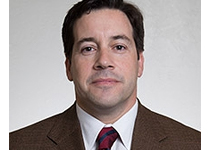Jon Wolfsthal
May 27, 2014

View the full article from the National Interest:
Uncovering Iran’s Nuclear Past:
Where to Start? Where to Stop?
CNS Deputy Director and former White House official Jon Wolfsthal proposes a way to address the problem of Iran’s nuclear past and the ongoing negotiations between world powers and Iran. Tehran is negotiating with the United States and other members of the UN Security Council plus Germany (the P5+1) on ways to restrict its nuclear program in exchange for relief from crippling international sanctions. These talks focus mainly on how much nuclear material production capability—uranium enrichment in particular—Iran will possess in the months and years ahead as it seeks to regain the international community’s confidence that Tehran’s nuclear intentions are purely peaceful.
This effort is greatly complicated by an enormous amount of troubling—but not conclusive—evidence that Iran pursued a host of nuclear weapon development projects in the 1980s and through the 2000s. The work is spelled out in detail in a November 2011 report by the International Atomic Energy Agency (IAEA) Director General to the IAEA Board of Governors and an IranFactFile fact sheet. The documents detail almost a dozen areas of sensitive research that suggest Iran had a nuclear weapon development program in the past, something it continues to publicly deny.
The National Interest article by Vice President Joseph Biden’s former nuclear security advisor explains that only some of these past activities could help Iran quickly pursue a nuclear weapon and, thus, only some have to be resolved to enhance the prospects for a negotiated deal. The P5+1/Iran talks are designed to make it harder and take longer for Iran to build a nuclear weapon should it ever decide to do so. To be sure, Iran’s uranium enrichment capabilities are central to this effort. So are some but not all areas of past nuclear research. These include Iran’s past work on nuclear modeling and advanced calculations as well as the production of non-nuclear components for nuclear weapons, including detonators.
Other ares of past work, however, may have little or no impact on how quickly Iran could build a bomb. These include the way in which Iran managed its previous uranium mining operations or some of its procurement activities. In addition, the work Iran is accused of pursuing to plan for a possible nuclear test may have little impact on its ability to test a weapon in the future. Solving some of these less critical areas should not be made an impediment to an agreement that effectively addresses Iran’s real nuclear weapon potential.
In addition, it is important that Iran acknowledge that it has, in fact, pursued nuclear weapon work in the past. Such an acknowledgement is critical to preventing Iranian leaders from seeking to redefine history or from trying to portray themselves as without blame for the current impasse. However, it is both unnecessary and highly unlikely that Iran will make such a statement in public, especially in the wake of religious pronouncements that the pursuit of nuclear weapons is against the teachings of Islam. As such, Iran and the IAEA could conclude private discussions that are not published or reported in full to the IAEA Board of Governors, but that ensure full disclosure of key areas of Iran’s past without being used to pursue even tighter sanctions or punishment. Such arrangements have been made in the past—with South Africa and South Korea, for example—to protect sensitive information, and could be used again here to good effect.
The article does not try to judge whether the accusations against Iran are accurate or not. The IAEA has a responsibility to pursue these allegations, and Iran has a strategic interest in resolving any and all outstanding allegations, especially if they are false. In the end, however, Iran must be willing to accept constraints on its nuclear program if sanctions relief is going to be possible. If regaining trust is part of the agreement, then working to resolve those outstanding issues that actually affect Iran’s nuclear potential should be included as well, perhaps at the expense of some program elements that are less critical.
